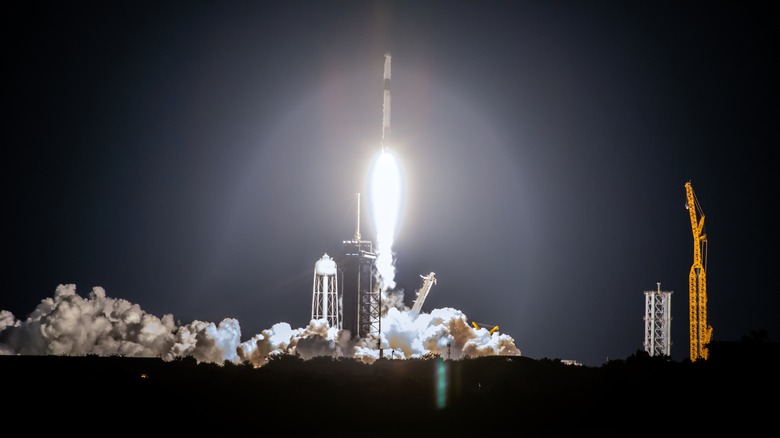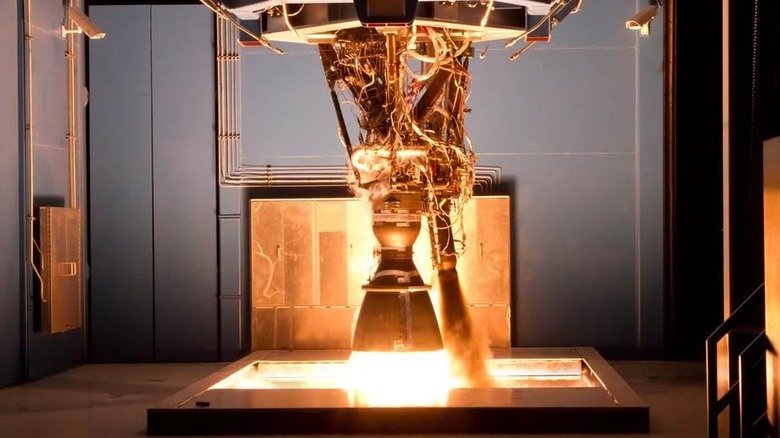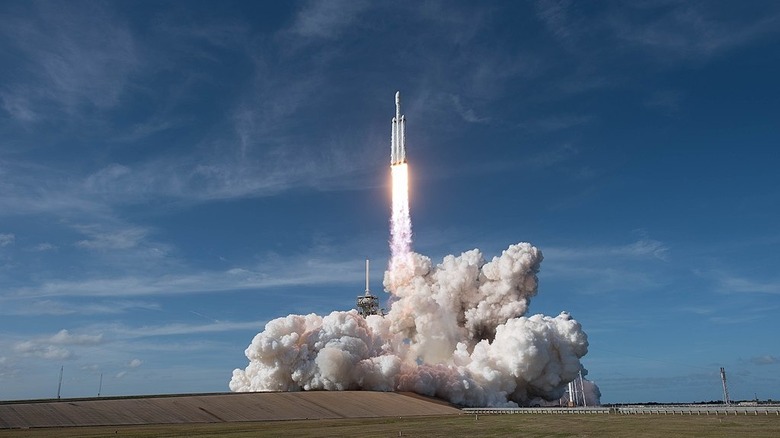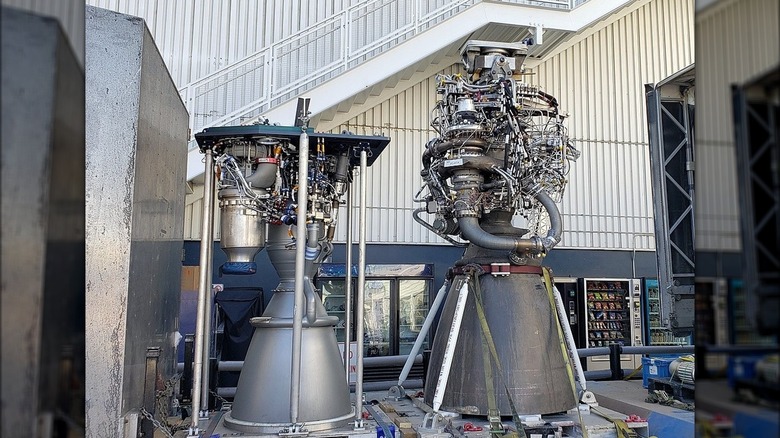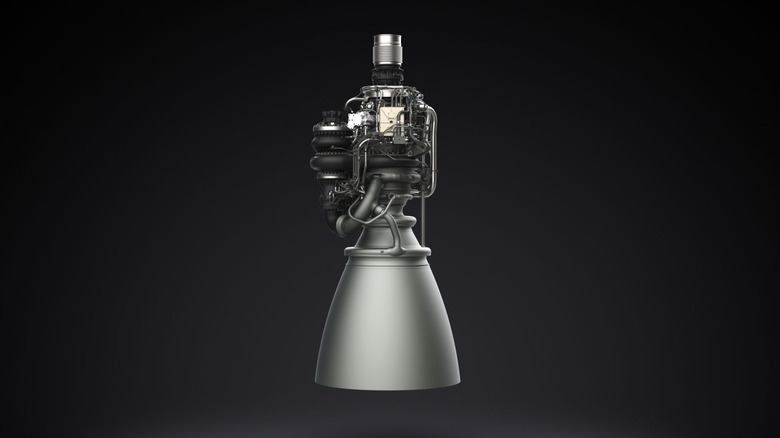What's The Difference Between SpaceX's Raptor & Merlin Engines?
Humankind's first Space Race began on October 4, 1957, when the Soviet Union launched the first artificial satellite (Sputnik) into orbit around Earth. The unparalleled and exponential explosion of technology that followed was nothing short of reality-changing. In 2002, Elon Musk launched SpaceX, which transformed the aerospace industry, making spaceflight more affordable and opening the doors for other companies to pursue commercial space flight more seriously.
Where reaching beyond the Kármán line (the boundary that separates our atmosphere from outer space) was once the sole domain of world powers like the United States (through NASA) and Russia (via ROSCOSMOS), private companies like SpaceX, Blue Origin, Virgin Galactic and a handful of others have taken the lead in ushering in our second Space Race. You can now even book a flight on a SpaceX mission slated for late 2024.
Important SpaceX missions have experienced many firsts. Starting in 2008, the Falcon 1 became the first privately developed liquid-fueled rocket to reach orbit. Two years after that, Falcon 9 completed its first successful flight. In 2012, Dragon became the first private ship to dock with the International Space Station (ISS), and in 2018, the Falcon Heavy was first launched.
However, none of those ships could have reached space without SpaceX's proprietary Merlin and Raptor engines, each of which are very different.
Merlin is SpaceX's reliable workhorse
Merlin is SpaceX's first and most reliable rocket engine. Considered one of the most powerful engines propelling space exploration, it is the heart of the Falcon 9 and Falcon Heavy. Ironically, Merlin's development was driven by the company's need to avoid bankruptcy, according to Musk himself in an Everyday Astronaut interview. It combined the inducer and impeller into a single shaft to make the simplest pump-fed engine possible.
Until recently, the rockets that powered astronauts couldn't be reused. Merlin was different in that it was designed to be recovered and reused. The move from an ablative to a regeneratively cooled chamber helped increase the engine's longevity and created a much longer reusability window.
The Merlin engine uses a mixture of liquid oxygen (LOx) and Rocket Propellant-1 (RP-1), a refined form of kerosene, as fuel. Each can produce 190,000 pound-force of thrust. The first stage of the Falcon 9 uses nine Merlins, generating more than 1.7 million pounds of thrust at sea level.
As the ship reaches the end of its first stage, the nine Merlins power down, slowing the rocket. Once jettisoned, they reenter the earth's atmosphere and land autonomously to be used again. The second stage of the Falcon 9 is powered by a single Merlin Vacuum Engine (with a thrust of 220,500 lbf) that can be reused several times to move the ship into its proper orbit.
More Merlins make more momentum
The Falcon Heavy carries over 140,000 pounds (64 metric tons) into space and is considered one of the most powerful working rockets on the planet. Since it's much beefier than the Falcon 9, it needs a lot more boost to get it off the pad and into space.
The first stage alone uses three times the number of engines than the Falcon 9, housed in three reusable nine-engine cores. The combined thrust at launch of these 27 Merlin engines equals more than 5 million pounds. If you're curious, that's roughly the same output as eighteen 747 passenger jets. Once the pair of side engine cores (equalling 18 engines) have completed their job, they separate from the main core and return to Earth while the center set (with the remaining nine) continues powering the Heavy.
It's good to remember that once upon a time, NASA had to create from scratch what it needed to get humans to the moon. In doing so, it developed technology found in countless things that today we take for granted, such as mobile phone cameras, LASIK eye surgery, scratch-resistant lenses, memory foam, freeze-dried food, the computer mouse, water filters, ski boots, and baby formula. SpaceX has had to be similarly creative in pushing through the boundaries to get us to a time when we can consider space travel as mundane as taking a flight somewhere.
The Raptor thrusts ahead of Merlin
Then we come to SpaceX's Starship, which may sound like something ripped straight out of a science fiction show, but then so does the United States Space Force. Eventually, this galactic adventurer will take up to 100 humans per flight "to the Moon, Mars, and beyond." It's made up of a first-stage Super Heavy booster rocket and a second-stage, fully reusable spacecraft called the Starship system.
At 397 feet tall and 29.5 feet in diameter, it has a payload capacity between 100 and 150 tons. Super Heavy is powered by 33 Raptor engines, 13 of which are in the center and 20 around the perimeter, making it one of the most powerful launch vehicles ever built. Each Raptor has double the thrust capability of a Merlin and, when combined, can generate some 16.7 million pounds of thrust. Once jettisoned, it will automatically return to the launch site.
Meanwhile, the Starship system will continue on its merry way powered by three additional Raptor engines. Once in the vacuum of outer space, three special Raptor Vacuum (RVac) engines with larger exhaust sections and expansion nozzles will take over.
Aside from being bigger and having a far more powerful boost, Raptor and Merlin have a few other main differences. First is the fuel source itself. Both use liquid oxygen (LOx), but Merlin combines it with RP-1 (kerosene), while Raptor pairs the LOx with cryogenically sub-cooled liquid methane (CH4) — for one very significant reason.
An open versus closed system
The change from RP-1 to CH4 was made because of a process called coking. Each Merlin engine must be thoroughly cleaned before it can be reused. Why? Have you ever lit a tiki torch and watched the black smoke rise from its kerosene-dipped wick?
Now imagine a rocket burning thousands of pounds of the stuff. It leaves an enormous amount of solid carbon matter behind, which is fine with an expendable single-use engine but not so great if you want to reuse said engine. If unchecked, the soot will continue to build up and will eventually cause significant problems.
Merlin is an open-cycle gas-generator-powered engine. The LOx and RP-1 are burned inside a gas generator and are shot out of the converging-diverging nozzle, launching the rocket skyward. What makes the Merlin open-cycle is that all the fuel is not fully burned inside the combustion chamber but gets "thrown away" or dumped, so it's not a wholly efficient system.
The Raptor, however, is a closed-cycle, full-flow staged combustion engine. In simplest terms, the LOx and CH4 leave the fuel tanks and get pumped directly into their own individual turbines, making it the only engine to use dual gas turbines. When the super-cold liquids enter the turbine, they hit a pre-burner that causes the liquid to combust and morph into a gas.
Raptor is the most efficient rocket engine ever built
These liquids can't ignite alone, so a cross-connection between the two pre-burners allows some oxygen to enter the methane flow and vice versa. The resulting reaction is then directed into the turbine, spinning the blade. This turns the pump and spews almost every last bit into the combustion chamber, propelling the rocket with what Musk says is 99% efficiency, or the maximum allowed by physics as we know it today.
Interestingly, SpaceX externally starts the turbines before this process even begins with equipment on the launch mount. This procedure is what they were testing in July 2022 when the booster exploded on the pad at Starbase in Boca Chica, Texas.
On March 14, 2024, Starship took to the skies for its third test. It went farther and faster and stayed in the air longer than its two previous flights, but the first stage booster and upper-stage of the aircraft was lost. Undeterred, Elon Musk tweeted that he hopes to launch "at least 6 more flights this year," which is good news since NASA intends to use Starship to assist in portions of the Artemis 3 mission to the moon in September 2026.
